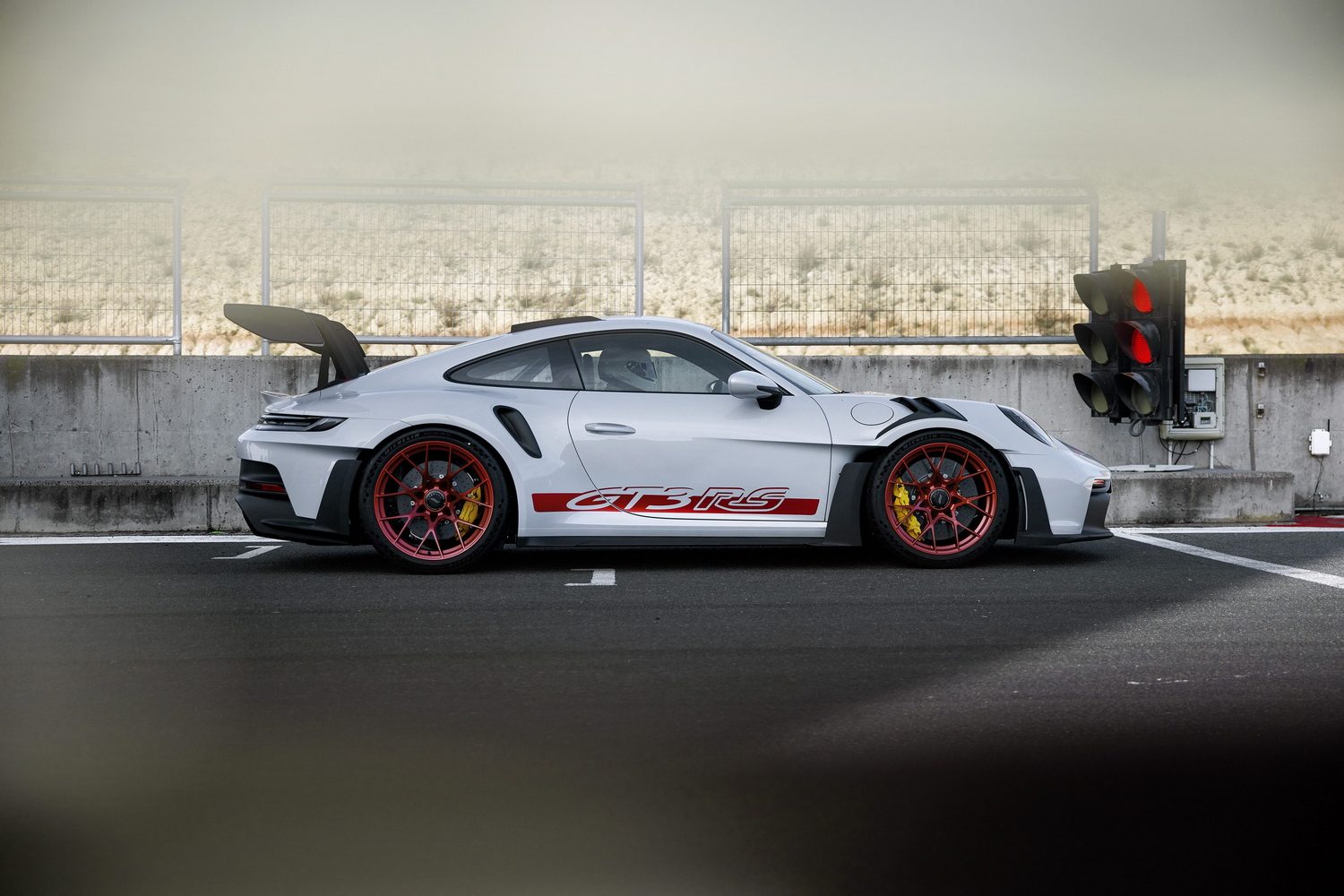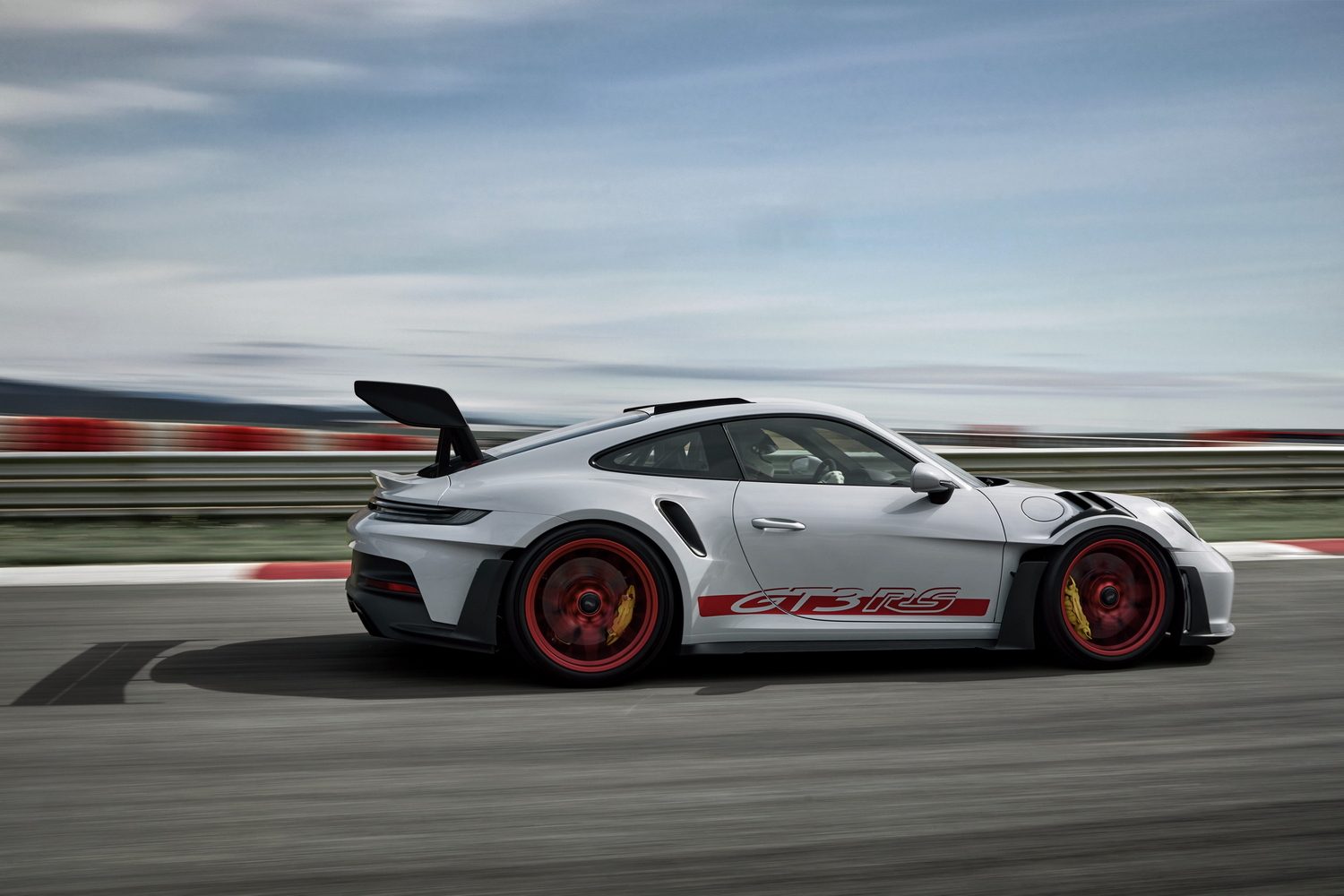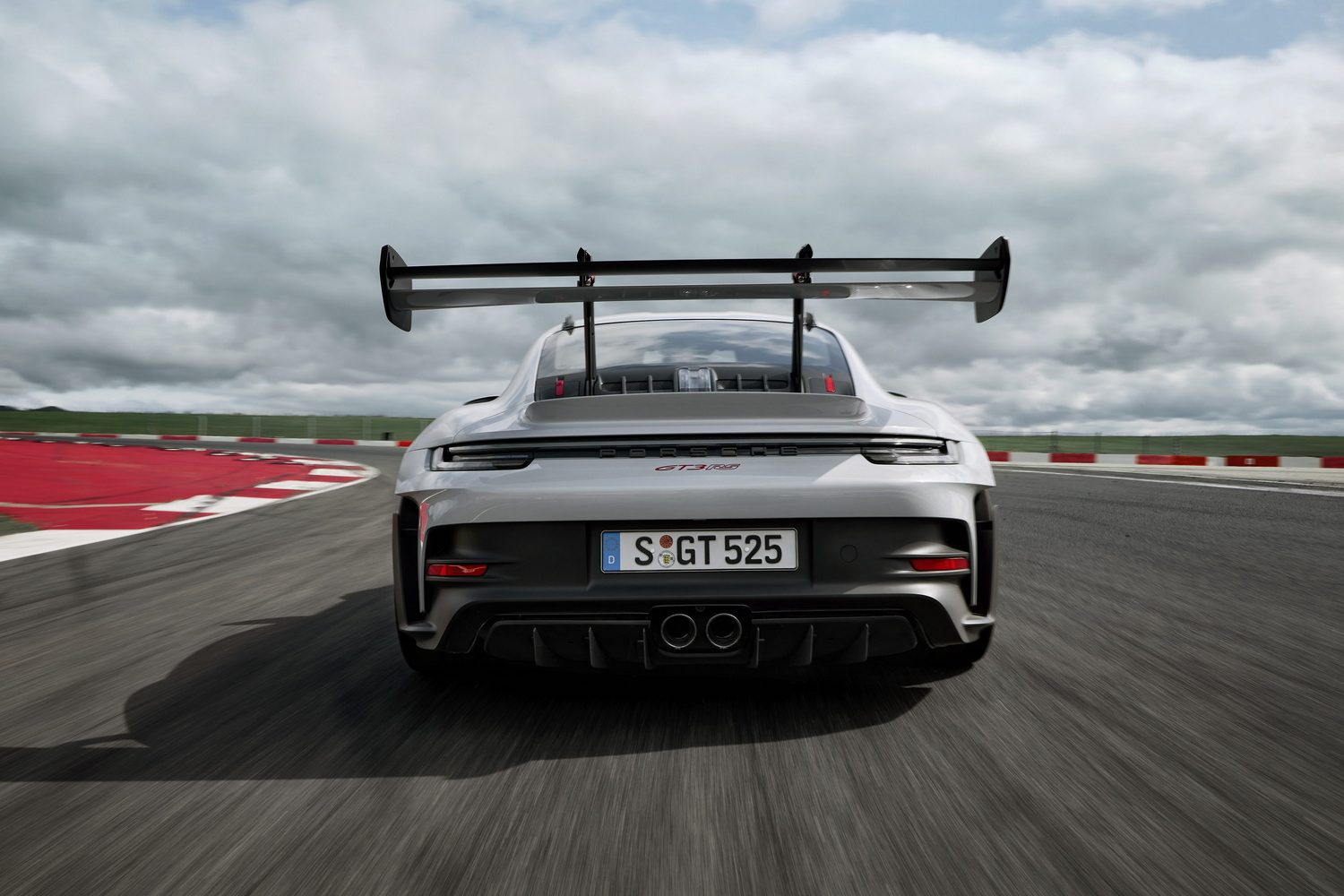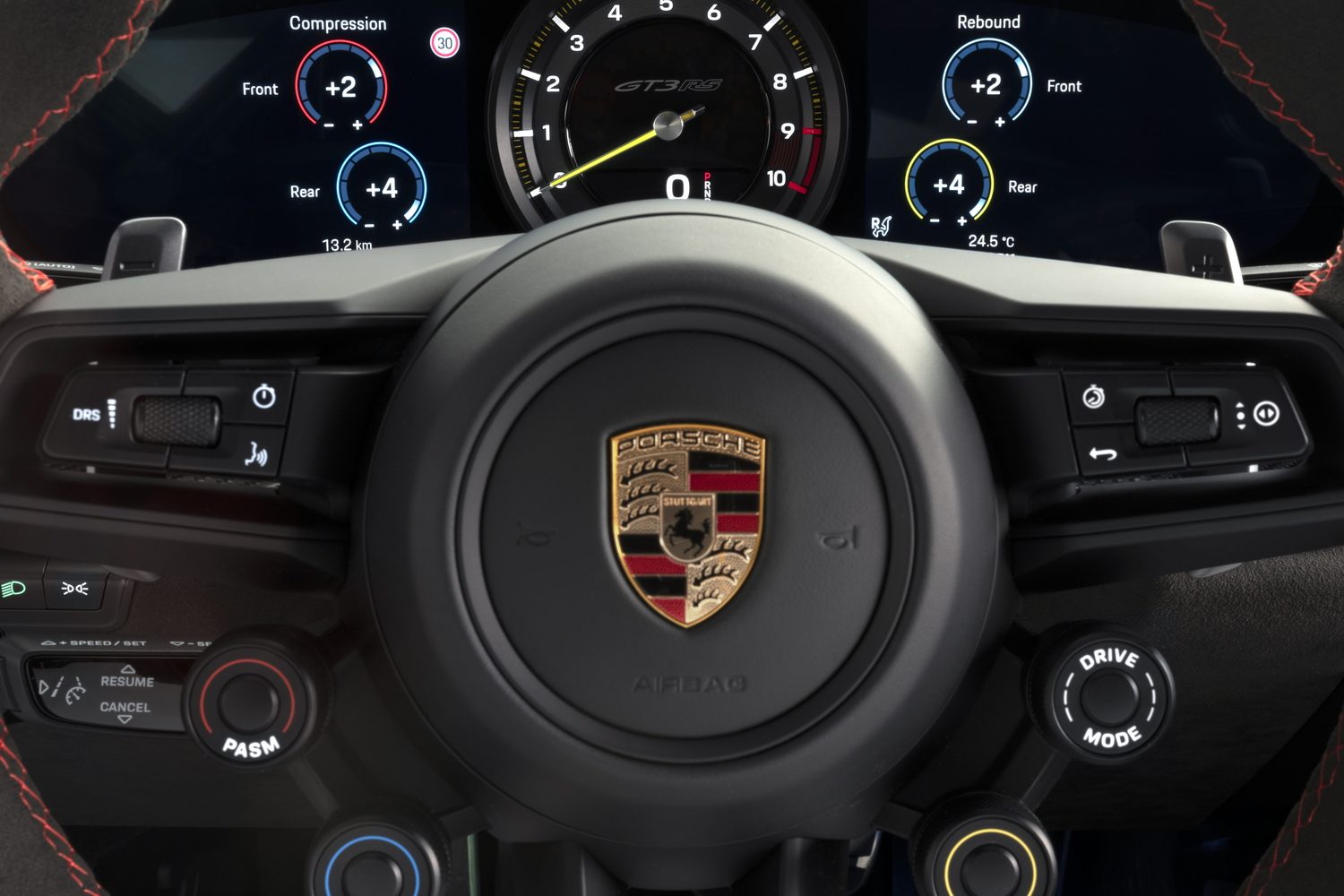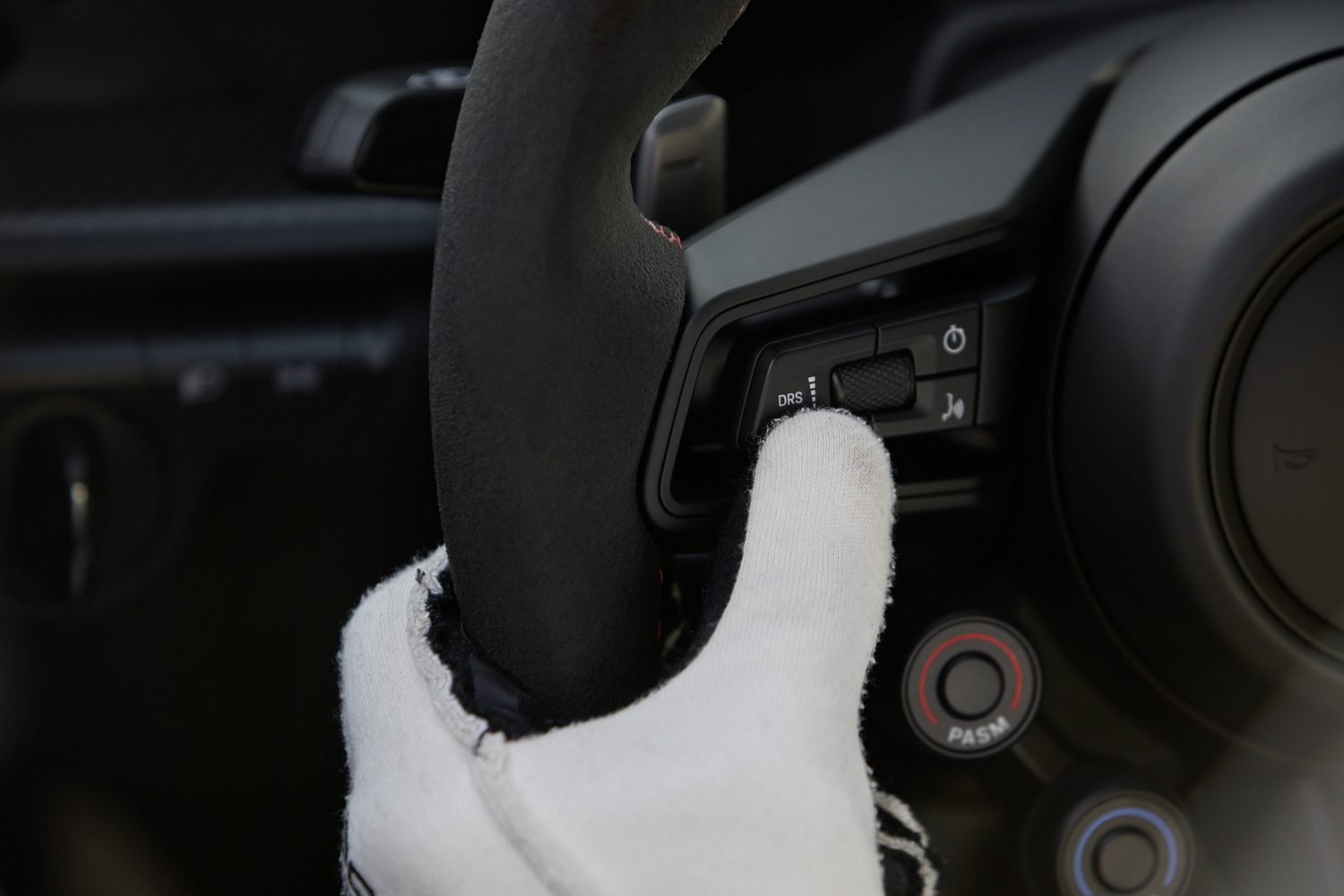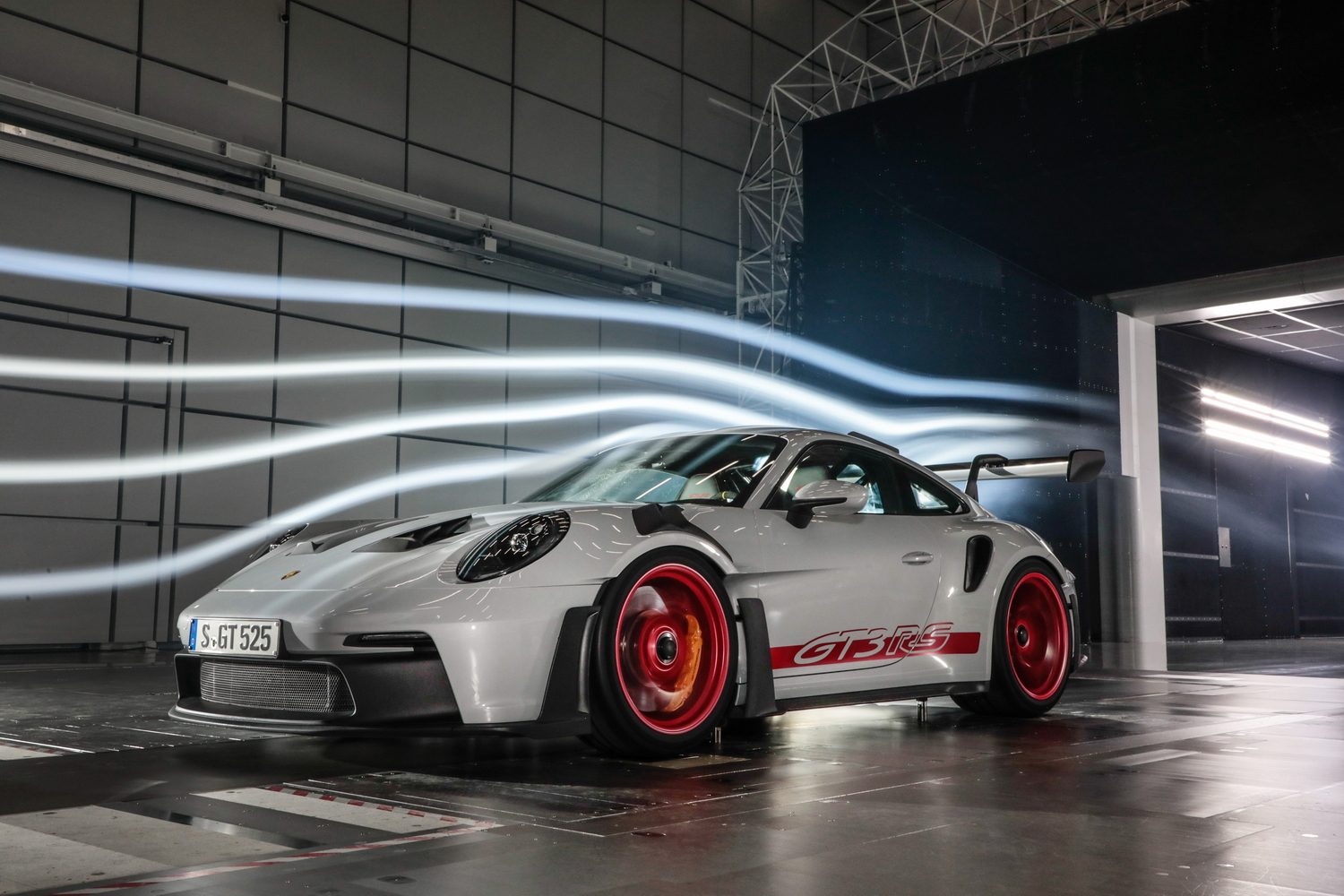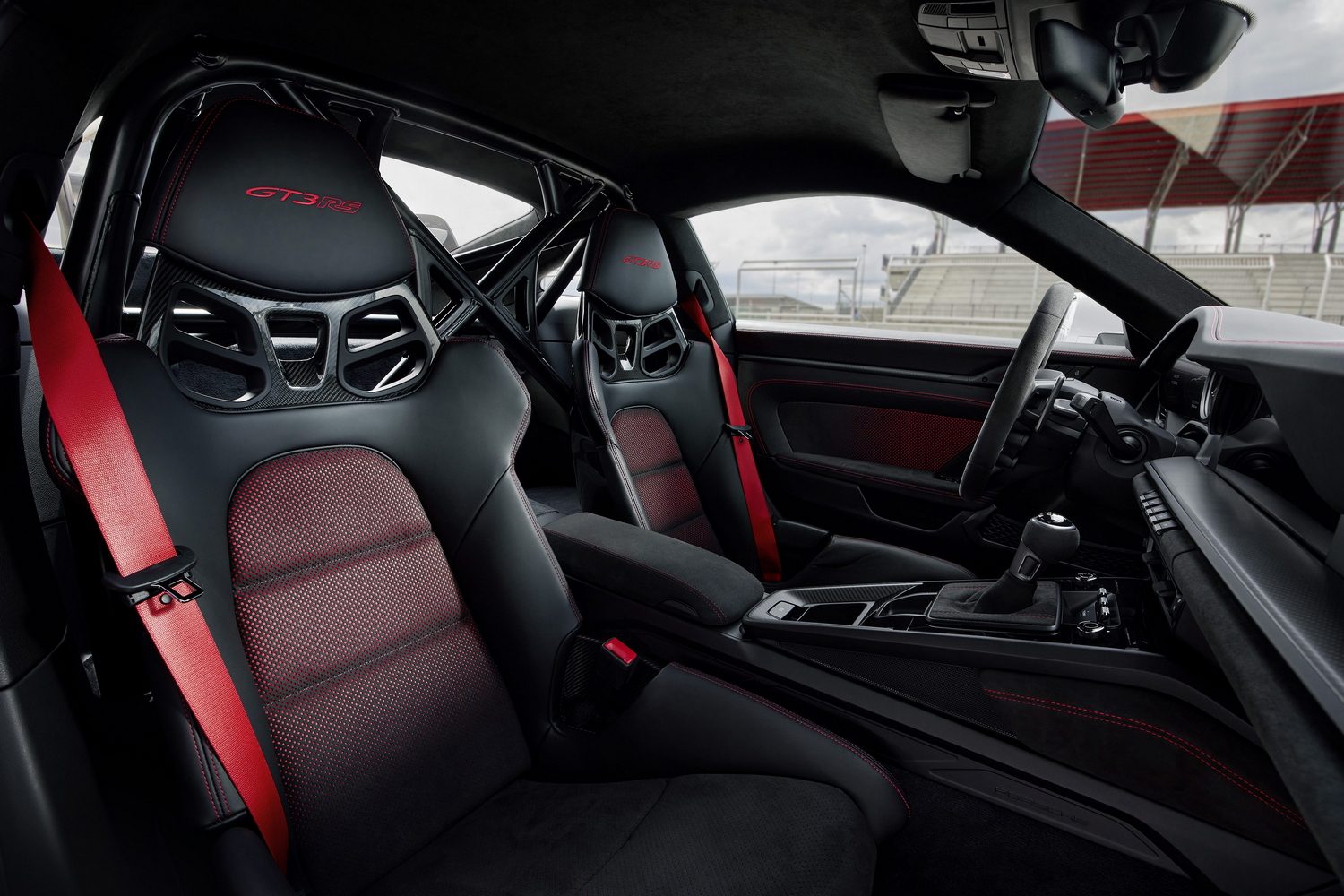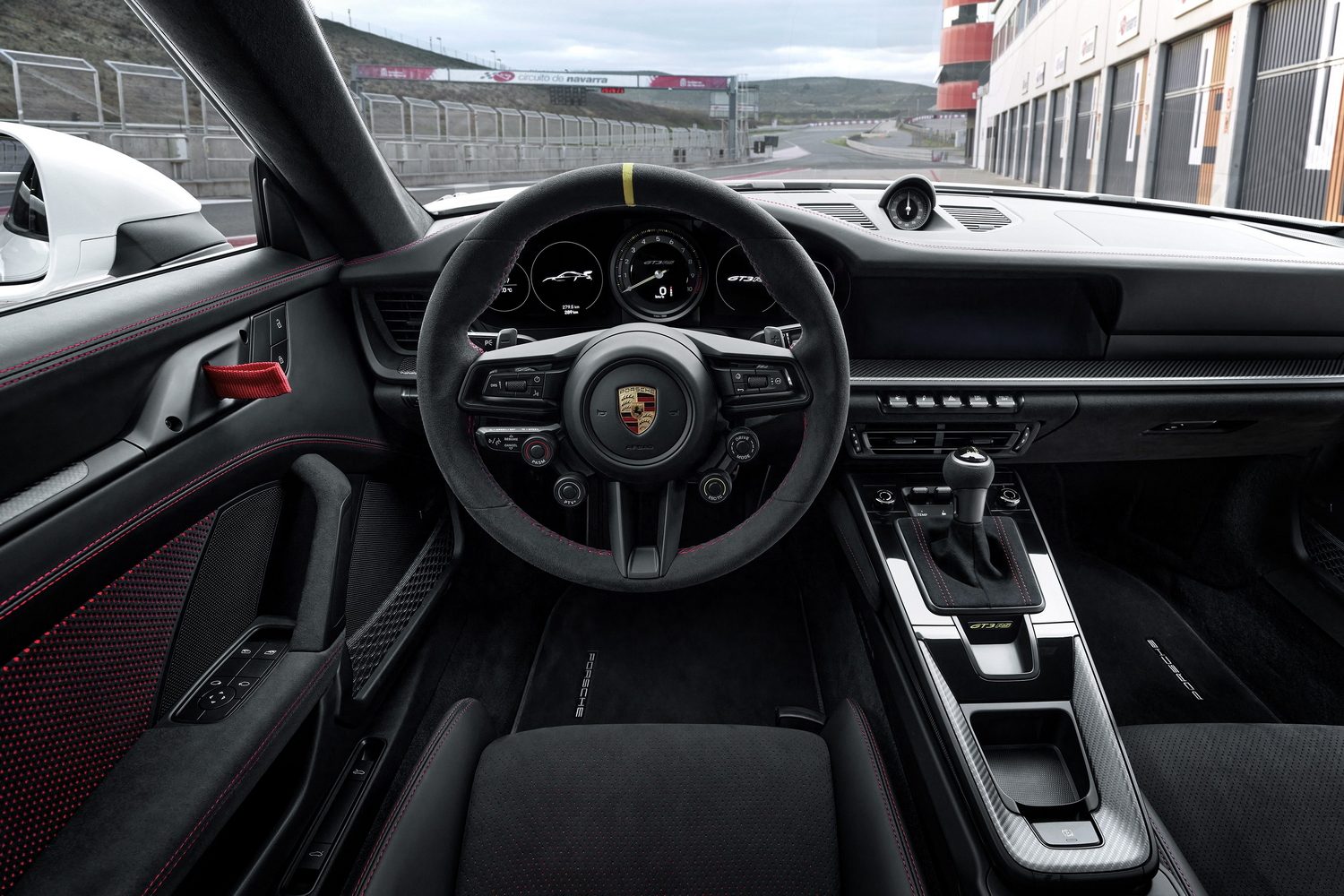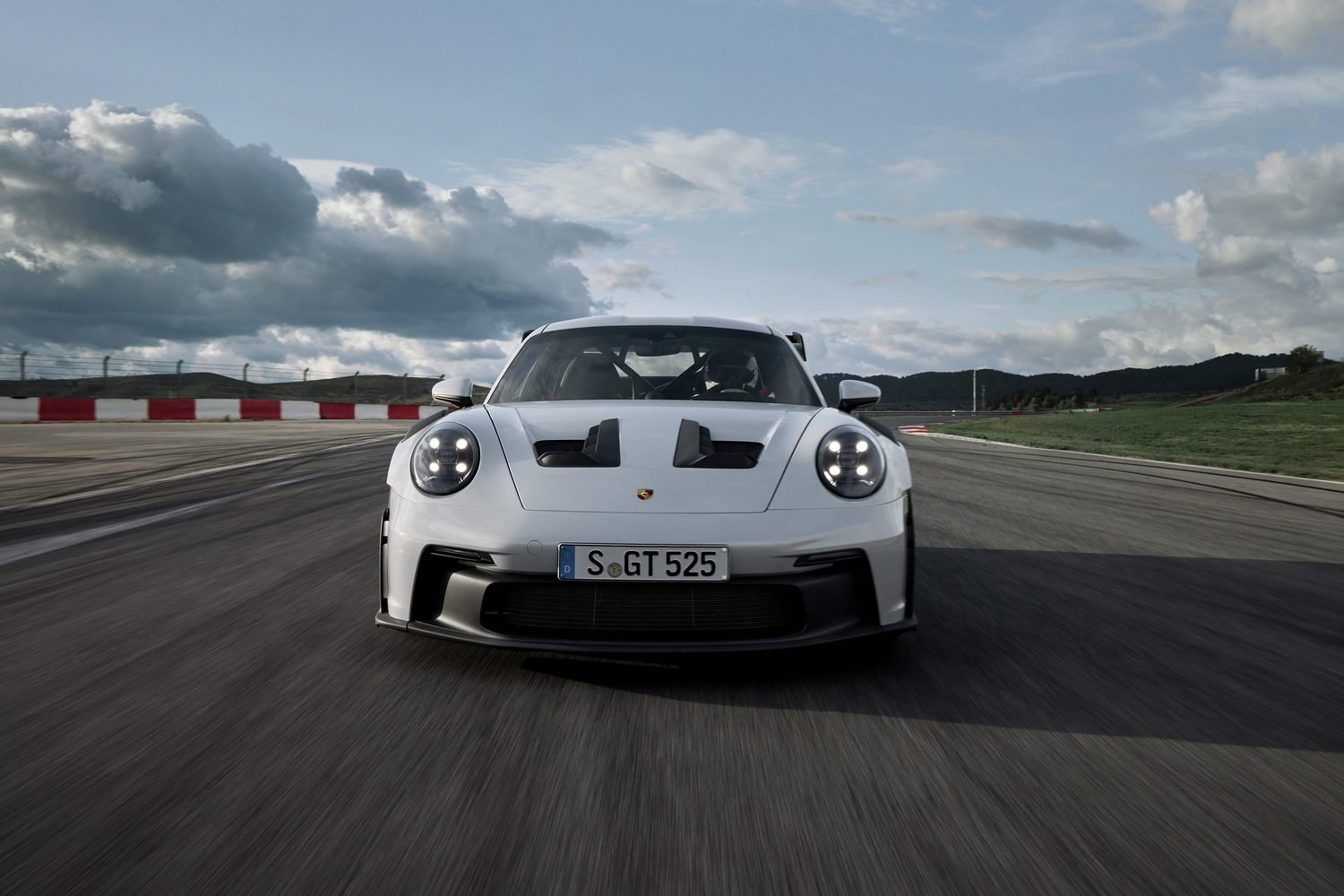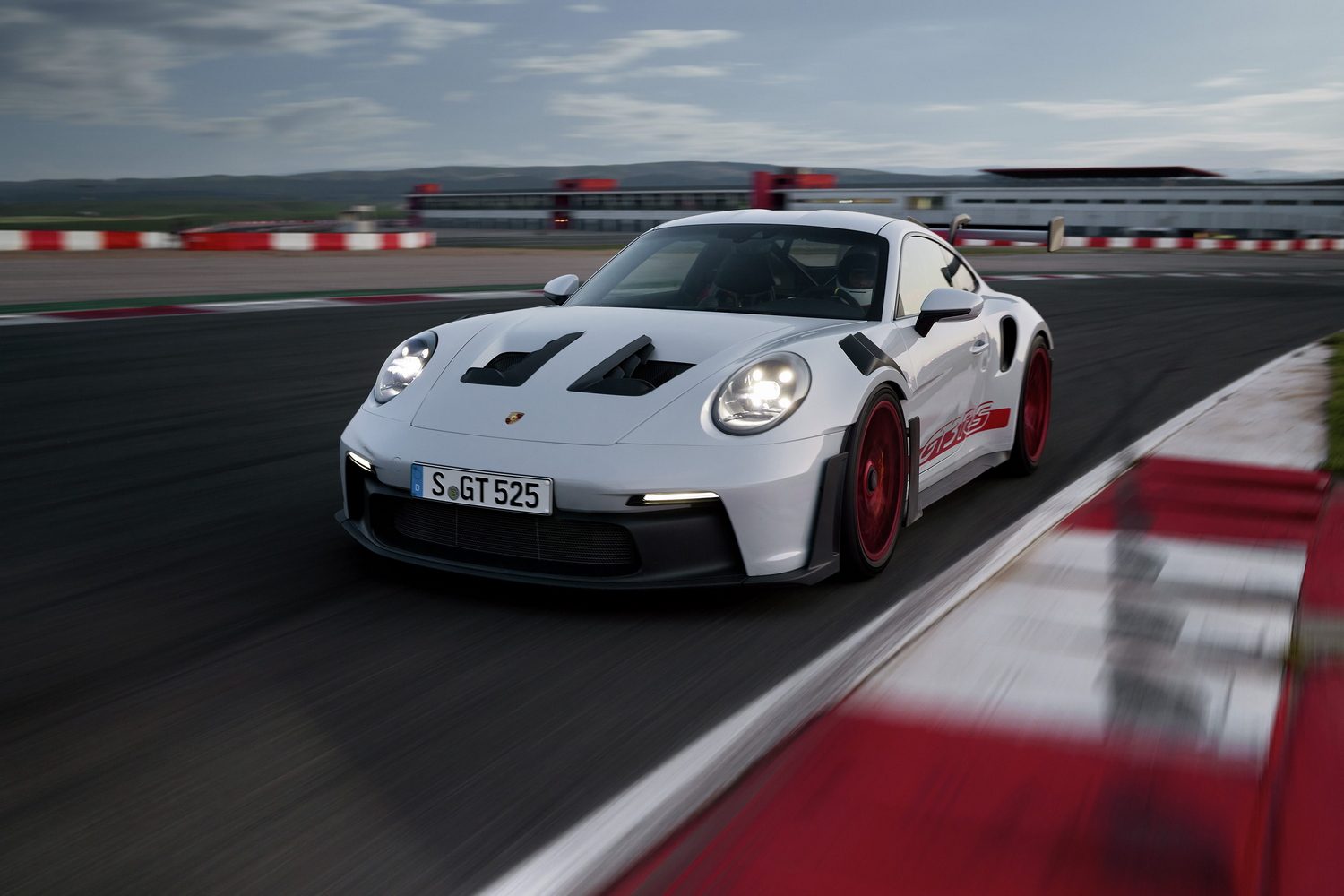Porsche has revealed the new 911 GT3 RS, a hardcore version of the 911 with even more of a track focus than the standard 911 GT3.
Vents and wings galore
The fact that the RS has a performance edge over the standard GT3 is immediately suggested by the abundance of extra vents and aerodynamic aids, not least the large swan-necked rear wing adorning the back. Indeed, it's aerodynamics rather than any abundance of extra power that makes the RS a more dedicated tool for track days than a regular GT3. Instead of just adding a bigger rear spoiler and leaving it that though, Porsche has been far more clever with the aero tweaks, right down to specially-shaped front wishbones that add an extra 40kg of downforce when the car is running at top speed.
Highly important to the new aerodynamic set-up is a new radiator inside what, on more road-oriented 911s, would normally be the front luggage compartment. Doing away with the usual three-radiator array, replacing it instead with a large central radiator with big nostril exit vents in the bonnet (an arrangement seen on Porsche's endurance racers), frees up more space for active aerodynamic elements in the nose.
Active aero
Those active wings working in partnership with the active two-part wing at the rear can generate up to 860kg of downforce when the car is running close to full chat at 285km/h. Hydraulically operated, as well as increasing downforce, the surfaces of the front and rear wings can flatten out as part of a drag reduction system to better enable the RS to reach its top speed of almost 300km/h. They can serve the opposite function too under heavy braking, helping the six-piston brake calipers (four pots at the rear) and (optional) ceramic composite brakes to bring the car to a halt by tilting to their maximum angle, increasing drag and slowing things down.
Other changes to better improve airflow and ventilation on the RS include louvred openings ahead of the front and rear wheel arches and vents at the rear to disperse air pressure as well as cool the braking system under heavy use. Meanwhile, there are fins on the roof to direct hot air from the front vents out sideways, reducing the temperature of the air entering the engine.
Flat six
Powering the RS is a 4.0-litre six-cylinder naturally aspirated boxer engine developing 525hp - a boost of 15hp on the 510hp of the standard GT3 thanks to new cam profiles. This engine, sending its power through a seven-speed dual-clutch gearbox with a modified final drive ratio to the rear wheels, lets the RS sprint from 0-100km/h in 3.2 seconds.
Aiding driving dynamics and pace is the fact that the RS is, at 1,450kg (full of fluids and fuel), relatively light. Much of the bodywork including the doors, front wings, roof, bonnet and, inside, the structure of the seats, is made from carbon-fibre reinforced plastic (CFRP).
"Race-derived ambience"
The interior is clad in black leather, Race-Tex and carbon fibre for, according to Porsche a "race-derived ambience". In front of the driver sits a pair of seven-inch screens, and drivers can switch between Normal, Sport and Track modes, depending on the circumstances, with nearly everything adjustable in the latter mode from the differential settings to the compression and rebound rates on the front and rear axles, using knobs located on the steering wheel.
For those expecting to make frequent use of the Track setting by taking their RS to the circuit more often, there's the no-extra-cost option of the Clubsport package that adds a steel rollover bar, handheld fire extinguisher and six-point safety harness for the driver.
Weissach package
For those particularly dedicated to shaving tenths of seconds off lap times, there's the very-much-extra-cost Weissach package (like that seen on the Cayman GT4 RS) that adds visible carbon-fibre weave to the bonnet, rear wing, roof and side mirrors. The front and rear anti-roll bars and rear coupling rods are also made from CFRP, with a CFRP rollover bar saving another 6kg. The option of forged magnesium alloy wheels on top of the Weissach package can cut an extra 8kg from the RS's overall weight.
The new Porsche 911 GT3 RS is available to order now for first deliveries in 2023.

